Friday, April 3rd 2020

Ryzen 7 3700X Trades Blows with Core i7-10700, 3600X with i5-10600K: Early ES Review
Hong Kong-based tech publication HKEPC posted a performance review of a few 10th generation Core "Comet Lake-S" desktop processor engineering samples they scored. These include the Core i7-10700 (8-core/16-thread), the i5-10600K (6-core/12-thread), the i5-10500, and the i5-10400. The four chips were paired with a Dell-sourced OEM motherboard based on Intel's B460 chipset, 16 GB of dual-channel DDR4-4133 memory, and an RX 5700 XT graphics card to make the test bench. This bench was compared to several Intel 9th generation Core and AMD 3rd generation Ryzen processors.
Among the purely CPU-oriented benchmarks, the i7-10700 was found to be trading blows with the Ryzen 7 3700X. It's important to note here, that the i7-10700 is a locked chip, possibly with 65 W rated TDP. Its 4.60 GHz boost frequency is lesser than that of the unlocked, 95 W i9-9900K, which ends up topping most of the performance charts where it's compared to the 3700X. Still the comparison between i7-10700 and 3700X can't be dismissed, since the new Intel chip could launch at roughly the same price as the 3700X (if you go by i7-9700 vs. i7-9700K launch price trends).The Ryzen 7 3700X beats the Core i7-10700 in Cinebench R15, but falls behind in Cinebench R20. The two end up performing within 2% of each other in CPU-Z bench, 3DMark Time Spy and FireStrike Extreme (physics scores). The mid-range Ryzen 5 3600X has much better luck warding off its upcoming rivals, with significant performance leads over the i5-10600K and i5-10500 in both versions of Cinebench, CPU-Z bench, as well as both 3DMark tests. The i5-10400 is within 6% of the i5-10600K. This is important, as the iGPU-devoid i5-10400F could retail at price points well under $190, two-thirds the price of the i5-10600K.These performance figures should be taken with a grain of salt since engineering samples have a way of performing very differently from retail chips. Intel is expected to launch its 10th generation Core "Comet Lake-S" processors and Intel 400-series chipset motherboards on April 30. Find more test results in the HKEPC article linked below.
Source:
HKEPC
Among the purely CPU-oriented benchmarks, the i7-10700 was found to be trading blows with the Ryzen 7 3700X. It's important to note here, that the i7-10700 is a locked chip, possibly with 65 W rated TDP. Its 4.60 GHz boost frequency is lesser than that of the unlocked, 95 W i9-9900K, which ends up topping most of the performance charts where it's compared to the 3700X. Still the comparison between i7-10700 and 3700X can't be dismissed, since the new Intel chip could launch at roughly the same price as the 3700X (if you go by i7-9700 vs. i7-9700K launch price trends).The Ryzen 7 3700X beats the Core i7-10700 in Cinebench R15, but falls behind in Cinebench R20. The two end up performing within 2% of each other in CPU-Z bench, 3DMark Time Spy and FireStrike Extreme (physics scores). The mid-range Ryzen 5 3600X has much better luck warding off its upcoming rivals, with significant performance leads over the i5-10600K and i5-10500 in both versions of Cinebench, CPU-Z bench, as well as both 3DMark tests. The i5-10400 is within 6% of the i5-10600K. This is important, as the iGPU-devoid i5-10400F could retail at price points well under $190, two-thirds the price of the i5-10600K.These performance figures should be taken with a grain of salt since engineering samples have a way of performing very differently from retail chips. Intel is expected to launch its 10th generation Core "Comet Lake-S" processors and Intel 400-series chipset motherboards on April 30. Find more test results in the HKEPC article linked below.
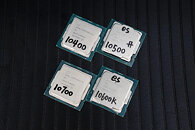
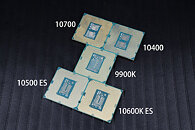
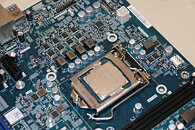
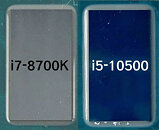
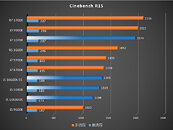
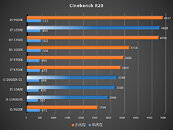
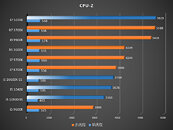
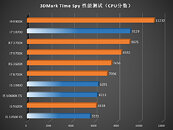
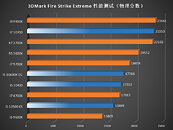
97 Comments on Ryzen 7 3700X Trades Blows with Core i7-10700, 3600X with i5-10600K: Early ES Review
Or maybe Intel completely messed up the pinouts on these chips so that wouldn't work.
But interesting to see how the 8700k and the 3600x are compared to the "new flock" of Intel 10th gen.
Of Course, all of this is early numbers, not the final CPU'S (there are still some slight changes to be expected from Eng-samples to the final product) and a generic OEM-Board which also influences the numbers compared to the later Tests on "high end consumer boards" (it doesn't MASSIVELY Change the numbers bit still will Show a noticable difference to this test here). Like I said, won't Change the world, but I'm curious About the final testing / Performance and how it compares to the 2700x and 8700k ((which both look more and more like really nice ways to upgrade regarding Price-Drops which could/should be expected in that market :) ))
In that comparison, 8700K will suffer from security issues while 10600 has most of them fixed in hardware.
The more curious graph from the HKEPC story is this one though:
Regarding the security issues I'd be really concerned if I'd be using it in Company Hardware, a Server or in an Environment where it really affects me. Here I just care About the Performance loss for the fixes that are out there and "enough for my Needs" --- and as Long as the 8700k performs roughly like it does Right now it's still more than a viable Option (Looking at the mobo+cpu Prices compared to 9th gen and 10th gen Prices). Yes, regarding that I could also look at the 2700x or 3600x on AMD-Side, but it is what it is and she wants to Keep her Intel logo ^^ (and I love her too much to argue About something like that :D *lol* )
If intel didn't change most of the socket's pinout it may be possible.
Edit: I remember cutting the tabs in the socket with a hot knife, then using the sticker mod.
While the Comet Lake-S platform might not be very exciting to us end users, it will not be a bad platform either. It's yet another Skylake with two more cores, more aggressive boosting and some tweaks, so I think we all have a good idea of where it will land performance wise. Conscious PC buyers should always look to benchmarks relevant to their use case; e.g. the Cinebench scores are only relevant if you plan to use Cinema4D, and specific benchmarks like this should not be extrapolated into generic performance. The Skylake architecture already performs excellently in workloads like Photoshop, Premiere, web browsing and programming, so these CPUs are relevant for plenty of users. The bigger problems for Comet Lake-S are two things; energy efficiency (which matters to some) and market relevance if Zen 3 is looming.
Can it safely pull more than 150 watts on 4 pin at all. how is it not burning.
Based on pictures in the source article Intel is still/again using the 6-core dies for 10600K. Think about it this way - Ryzen 3000 CPUs are 125mm^2 12nm IO die plus 75mm^2 7nm CCD die. Intel's 6-core is 149mm^2 14nm die. Intel 8-core die is 175mm^2 which should still be very good in terms of manufacturing cost. Hell, even 10-die is ~200mm^2 which is right where Zen/Zen+ dies were.
What am I missing? Is this a joke?
For me the worst part about getting this new chipset is that I believe there is no upgrade path ahead for it. I read apparently the next gen Intel CPU is going to require a new socket. So this 4xx series chipset is an upgrade dead end.The security flaws discovered to date should likely be fixed at the silicon level.
No you are not missing anything, this "new" chip is basically a Skylake on steroids.
Extra cache, besides higher clocks, being the biggest difference.